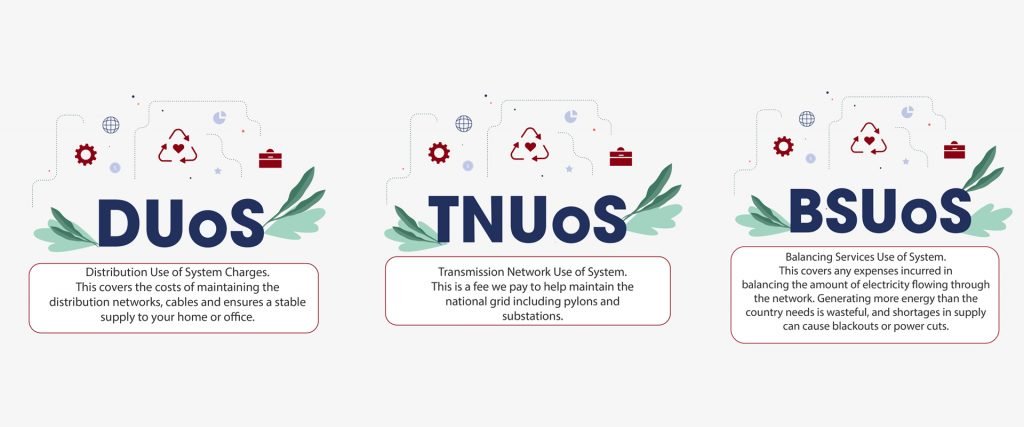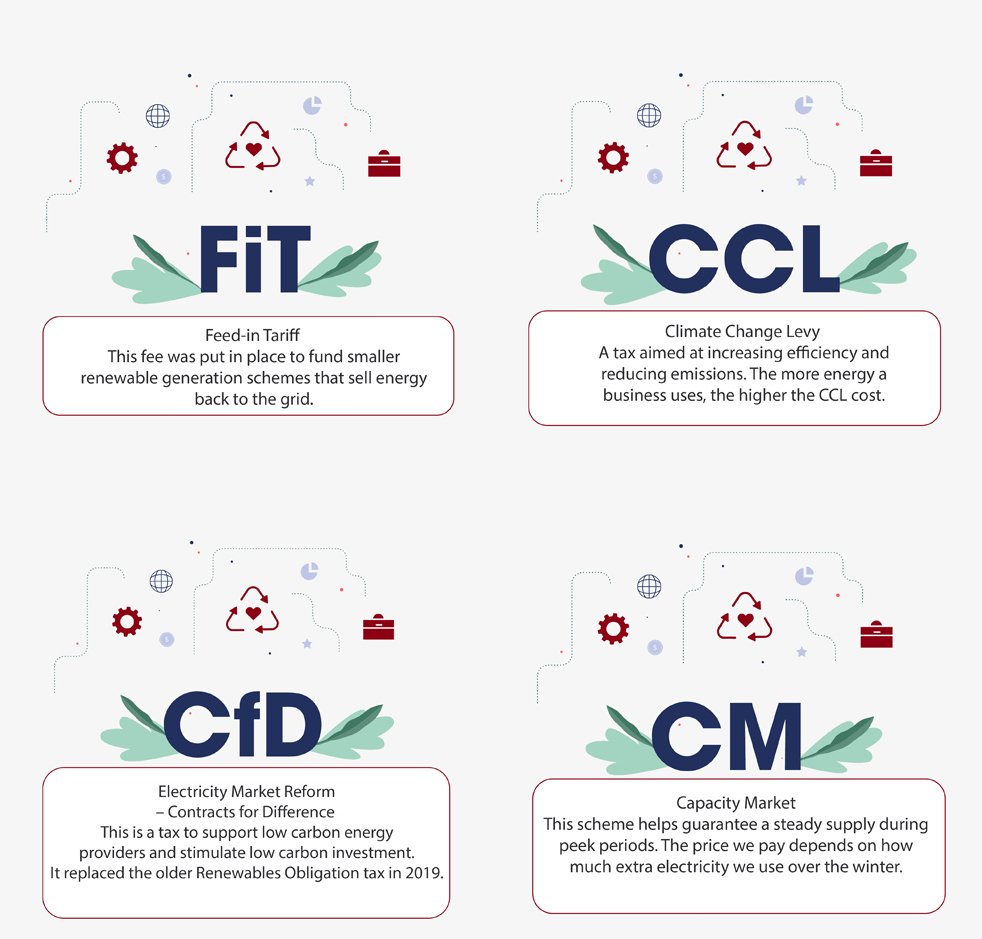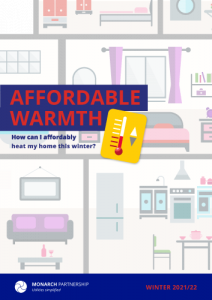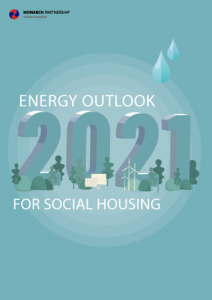Over the last few years, the cost of electricity has been falling. Wholesale prices have dropped by roughly 60% from the highpoint in September 2018. You may be wondering then, why your energy bills have increased if demand and cost have gone down? The reason for this is a rise in what are known as non-commodity, or ‘third-party’, costs.
What are non-commodity costs?
Essentially the amount we pay for energy includes three different expenses. The first is the wholesale price of the actual amount of power we use (the commodity). Secondly, we have the cost of transmission and distribution across the network. And finally a variety of government levy and taxes. The energy companies pay these fees and pass the cost onto their customers.

In 2009 non-commodity costs accounted for about 29% of energy prices. In 2021 this has risen to 64% and is predicted to reach 80% over the next decade.
Here is our guide to the different types of non-commodity costs.
Transmission and distribution costs
Every energy supplier incurs various expenses to run and maintain the power network. These vary from provider to provider and depend largely on the type of power plant. For example, solar and wind generators are less consistent than gas or nuclear power and so need to spend money balancing and regulating their output. With a move towards renewable energy, the cost of balancing the system is likely to increase.

Government levy and taxes:
These taxes fund various government initiatives and green energy programs.
 Covid-19 and your bills
Covid-19 and your bills
Some non-commodity costs are set at the beginning of each year. Others are subject to change throughout the year. In simple terms, the non-commodity charges are equal to the cost of providing energy to the nation divided by how much we use. The more we need to use, the lower the cost of non-commodity and the higher the wholesale price.
With more of us working from home during the lockdown, our use of electricity dropped significantly. The extra hour in bed pushed the morning surge back, and without a commute home, the transport network could cut services and lower its usage too.
This didn’t stop the flow of energy though. Following weeks of high winds in January 2020, the network had a surplus of power and a far lower demand. This resulted in costs of nearly £50m to balance the network and sell off spare energy at a loss on the European market. This is one of the rare occasions where it would have been cheaper long term to leave our lights on.
The lockdown also affected the FiT and CfD levy costs. These are set four times a year and significant changes in generation or demand of renewable energy have a knock-on effect on how much we pay in taxes to support the industry. On the bright side, lower emissions mean we will end up paying less towards the climate change tax.
Managing your energy costs
With the increases in non-commodity costs set to continue, it is important to keep an eye on your bills. Proper monitoring and tracking monthly changes will ensure you aren’t overpaying. In our experience, nearly 20% of all utility bills include a mistake.
At Monarch, we have over 30 years of experience managing utility expenses. In that time we have saved our customers over £130m. Your account manager can help you track your usage, keep an eye on your expenses and negotiate the best deals with your provider. You might even be able to claim back some money if you’ve been overcharged in the last few years. For more information on how we can help, contact us today.















